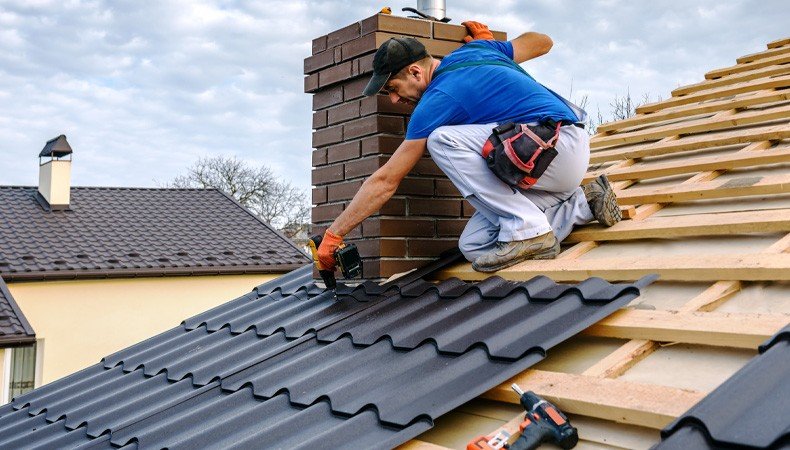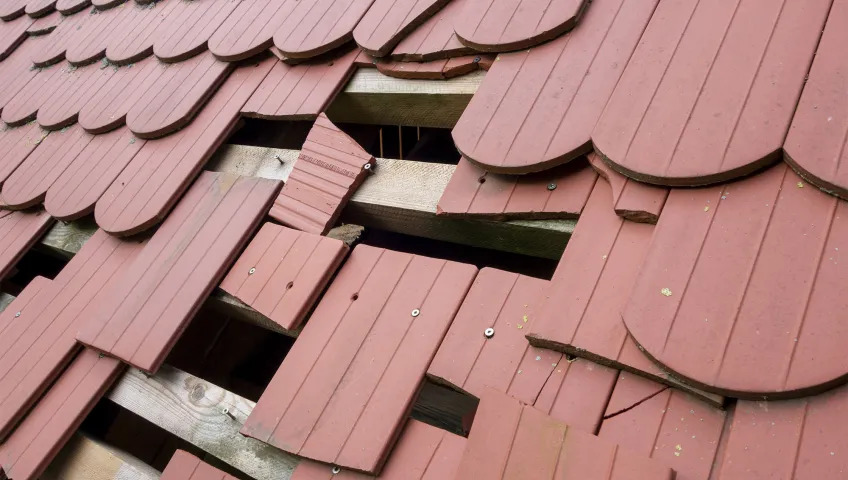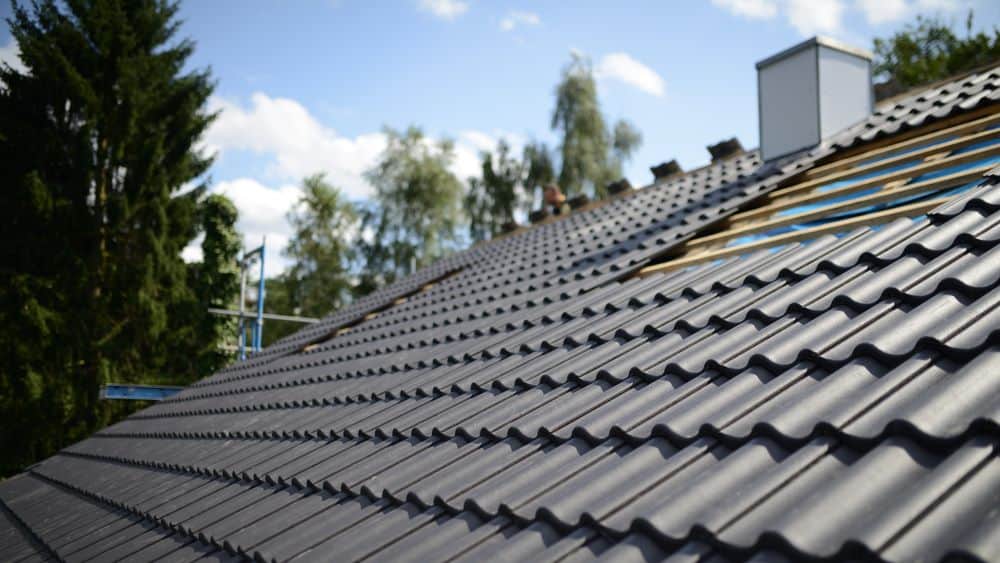Do you have question like will insurance cover your roof? Does Homeowners Insurance Cover Roof Replacement? than you are came at right place. Here we will discuss everything about How Roofing Insurance Claims Works.
How to Get Homeowners Insurance to Pay for a Roof Replacement
Your roof is covered by homeowners insurance. However, it only guards against specific problems and, under the correct circumstances, leads to a replacement.
This implies that simply because your roof is old, your insurance provider will not pay to replace it. They will also deny a claim just because your roof is leaking.
Because they fall under the homeowner’s general maintenance obligation, problems resulting from ordinary wear and tear or a roof that has beyond its designed life span are not eligible for reimbursement.
Many homeowners who have experienced the horror of dealing with roof damage and trying to have their insurance claim accepted will agree that getting a claim granted can be tough at times.
So, The question is how do you get insurance to pay for your roof replacement?
How Roof Coverage Works?

The roof, of all the aspects of your house, has the greatest direct exposure to the weather. There is the threat of major snow, hail, or ice storms in northern regions. Tornadoes and cyclones are very common in the Midwest. There is a risk of gales and hurricane-force winds in tropical climes.
Mother Nature can cause not just direct harm, but also indirect damage, such as a powerful windstorm that topples a tree onto your roof. Wildfires may erupt. Or there could be more unlikely events, such as debris from an explosion or an aeroplane falling down on the roof from above.
Fortunately, because your roof is a major element of your home’s structure, the dwelling coverage section of your homeowners’ insurance policy will usually insure you against such risks. The homeowner may be eligible for a total or partial roof replacement as a result of the damage and destruction caused by such incidents.
Does Your Homeowners Insurance Cover for a New Roof?
Many individuals are questioning, “Does Homeowners Insurance Pay for a New Roof?” as the likelihood of severe storms increases. The stakes are especially high for people who reside in places where heavy storms cause extensive roof damage. If one’s roof is destroyed during a storm, the chances of subsequent damage to the house are increased. And with each additional pound of damage, the expense of repair rises.
Depending on what caused the damage, homeowners insurance may cover roof damage. You should be covered if the damage was caused by hail, a falling tree, or anything else that wasn’t your fault.
Special Considerations for Your Roof Coverage
If a spectacular occurrence produces dramatic damage to the roof, such as it collapsing, having a huge hole, or being completely torn off, coverage is likely. When the harm is less severe, even if it was inflicted by nature, it becomes more challenging. Consider what happens if a strong thunderstorm nicks a few of your roof’s tiles. It’s possible that the insurance company will define that as cosmetic damage and refuse to pay for it. Let’s say you realise your roof has grown leaky as a result of the aforementioned storm. Despite the fact that the rains caused damage, the insurance company may say it’s a typical wear-and-tear issue resulting from your roof’s slow degradation, which is never covered.
Ironically, any water damage to your walls, floors, or furnishings caused by a leaking roof would most likely be covered under your policy’s all-perils section. The roof repair, on the other hand, would not be.
Roof Cost Considerations

The cost of a roof is based upon a number of factors, beginning with the roofing materials you select (ranging from cheap three-tab asphalt shingles up to architectural shingles or even slate). Other elements that affect the cost include the roofing contractor you hire, the pitch (the steepness of your roof), and the square footage of your roof. A three-tab composite roof for a modest house can be had for as little as $5,000. A typical architectural asphalt shingle roof costs between $4.00 and $5.50 per square foot in the United States, including all demolition, permit fees, trash disposal, and cleanup.
Typical average costs of different roofing options:-
- 30-year shingles:- $10,000 to $15,000
- 50-year shingles:- $10,000 to $20,000
- EPDM rubber:- $6,000 to $14,000
- TPO or PVC membrane:- $10,000 to $15,000
- Wood shingles:- $14,000 to $25,000
- Aluminum shingles:- $14,000 to $28,000
- Three-tab asphalt shingles:- $8,000 to $12,000
- Steel shingles:- $12,000 to $25,000
- Clay tiles:- $20,000 to $50,000
- Standing-seam steel roofing:- $21,000 to $30,000
- Natural slate:- $25,000 to $50,000
- Concrete tile:- $25,000 to $40,000
How do you get insurance to pay for your roof replacement?
For your homeowners insurance to pay for a replacement, your roof must have been damaged by severe weather. Straight-line winds (also known as damaging winds) can occur during intense thunderstorms, hail storms, snowstorms, or tornadoes.
They’ll also cover any roof damage caused by storm-damaged tree limbs. If your roof has been severely damaged, there should be no doubt that they would pay to replace it.
However, whether your roof is worthy of a full replacement relies on what the insurance adjuster discovers during their examination. If the roof damage was caused by severe weather, you should be able to seek insurance to cover the cost of a new roof.
Procedure for your roofing Insurance Claim
It’s crucial to know what procedures to take when making an insurance claim with your homeowner’s insurance, whether you need a few new shingles, a total roof replacement, or one of the more typical roof repairs. Let’s get acquainted with the procedure.
Understand Your Insurance Coverage
Knowledge is a powerful tool. Don’t rely on your insurance company to inform you what is and isn’t covered.
The majority of us don’t read the policy’s fine print until something goes wrong. Now is the perfect opportunity to do so. Request a copy of the policy from your agent if you don’t have one, which is a regular problem. A physical copy or an electronic file should be supplied as soon as possible.
In most states, there are two types of coverage:
Repair coverage and replacement coverage.
Replacement insurance are more popular, but they come at a higher price. When an occurrence covered by the insurance policy occurs, the replacement coverage restores the roof to its original state.
The depreciation of the roof is frequently factored into the repair coverage. This implies you’ll earn a percentage of the cost of replacement dependent on the material and age of the roof. For a roof nearing the end of its useful life, it might be as low as 15%.
Checkout what your homeowner’s insurance covers
The first step toward a new roof is to review your house insurance coverage. Regrettably, not all roofing issues are covered by any insurance coverage. It’s critical to know exactly what you’re up against when you’re preparing to fight for your roof.
Review your policy
Now is the time to review your homeowner’s insurance policy or speak with an agent to obtain a complete understanding of what you should be doing. If you have damage that needs to be repaired right quickly, contact your insurance carrier to file a claim. There are restrictions and stipulations in policies that make the roof replacement null and void if you wait too long. It’s also crucial to be specific with the information you give the company so that they understand what will be covered.
When it comes to an ageing roof, your insurance policy may only cover a percentage of the cost depending on the roof’s loss of value.
If you ever have a query or worry about your policy, contact your homeowner’s insurance company to get a clear picture of what they will do for you.
Always be aware of contingency contracts
While everything may appear to be straightforward to you, depending on the roofing contractor you’re working with, it may not always be. Most roofers offer a free roof inspection and estimate, but hidden within are contingency contracts that seem to the consumer as an inspection report. So, while you may think you’re signing off on the inspection, you’re actually agreeing to have that company execute the work – another reason to read everything you sign!
Document for the damage to your roof
When it comes to documenting the damage to your roof, a picture is worth a thousand words, and there’s no better way to get your point across to your insurance company than with plenty of visual evidence.
Even if your roof isn’t currently damaged, it’s a good idea to have a few before-and-after photos on hand. If your roof is ever damaged, these will come in handy and boost your chances of getting some extra help from your insurer.
Claim with your Homeowner’s Insurance within 30 Days
In most areas, a homeowner must make a claim within 30-60 days. When a claim is not presented on time, it is denied.
When there are a lot of claims, the sooner you submit your paperwork, the faster your claim will be processed.
The homeowners insurance process to replace your roof
You now know the five things you need to know about obtaining insurance to cover the cost of a roof replacement. You’re ready to file an insurance claim if you believe your roof has been damaged by a storm.
But, before you contact your insurance carrier, don’t you want to learn more about the claim process? While knowing what we’ve already discussed is helpful, this post doesn’t go into detail about how to file a claim.
That’s why we wrote another post outlining the steps involved in filing an insurance claim to rebuild a storm-damaged roof and what to expect.
What types of Material Requirements
Certain roofing materials may be required by an insurance carrier to meet state code specifications for roof repair and replacement. Wind, hail, and natural disasters must be tolerated by shingles, nails, tiles, and other materials. Homeowners seeking repairs must adhere to these material criteria by obtaining documentation of a state compliance certificate indicating that the repairs were completed correctly. An insurance payment can be made once that component has been validated.
Tips to Save on New Roof Costs
Depending on the roofing material chosen, a roof replacement might cost anywhere from $1.70 to $4.70 per square foot. 12 Roofing estimates are sometimes quoted by the “square,” which refers to a 10’x10′ space, or 100 square feet (thus you would receive a price for $325 per square). Someone might be able to assist you with asphalt shingle repair for a lower price. Tile and metal roofs will set you back a little more. Here are some pointers on how to keep your repair and replacement costs to a minimum.
1) Shop around: Before choosing someone, get quotations from many roofers and always ask for and check local references. Be sceptical of exceptionally inexpensive bids, since they may indicate poor workmanship, and ensure that roofers provide a warranty on materials and installation.
2) Time it right: Late summer and fall are the busiest seasons for roofers. If you replace your roof in the late winter or early spring, you can get a better deal or a discount.
3) Do it (or some of it) yourself: Think about doing some of the job yourself. If you have the time, the right tools, and a strong stomach for heights, removing old roofing before the contractor arrives may help you save money.
4) Consider an overlay: Installing new shingles on top of old ones is known as an overlay. Overlays require fewer hours of labour and cost less than a full replacement because the original roofing remains in place. An overlay, on the other hand, may void or limit the guarantee on roofing materials.
Due of additional work and job waste, overlays typically raise future replacement costs.
5) Do your research: Before consulting with contractors, determine the size and intricacy of your roof, as well as the specific materials you want installed.
What kind of Damage not covered in Roof Damage?
When it comes to roof damage, your homes insurance company is only too eager to assist you, unless you are the one who caused the damage.
This is only one of the reasons why you should evaluate your roof on a regular basis. If you’re thinking about buying a new home, you’ll also want to learn about the roof’s overall characteristics.
You should know things like how old it is, whether it has been repaired, what material it is constructed of, and when it was last inspected.
How To Get Insurance To Pay For Roof Replacement
Claim Scrutiny
An insurance company will analyse a claim for roof replacement, regardless of the type of roof covering materials or damaged areas of the roof, and expect the policyholder to produce thorough paperwork, before and after images, and other facts to validate a claim for processing.
So, if you want to know whether your insurance will cover the cost of your roof replacement, you’ll need to check your policy carefully to see what you’ll need to do ahead of time to file a valid claim.
Review Your Policy Coverage
Examining your policy’s coverage will help you figure out what kind of coverage you have for roof replacement. A roof that is less than ten years old is usually fully covered for repairs or replacement of damaged areas of the roof.
Always think Beyond the 10 Year Mark
When a roof is older than ten years, a homeowner is usually reimbursed for the roof’s diminishing or depreciated worth. The term “depreciated value” simply indicates that an insurance provider analyses a roof based on its age and wear and tear. The insurance company then assigns a lower value to a roof before it has been damaged.
It’s Depreciated Value
Other insurance policies only cover the depreciated value of the roof, regardless of whether it is newer or older, while others cover full repair or replacement costs regardless of the age of the roof.
Inspection and Prompt Reporting
Regardless of the circumstances surrounding a damaged roof, most insurance companies dispatch an inspector to examine and confirm the claim. If the inspector decides that the damage was caused by normal ageing, deteriorating circumstances, or everyday wear and tear, such findings are normally understood as routine maintenance and are not covered by a homeowner’s insurance policy.
Estimates Insurance Amount
Insurance companies may also request estimates from licenced roofing contractors for valid repair and replacement work, or they may employ their own cost estimators. It’s critical to have written estimates that are exact and detailed, as well as verification that a roofer is licenced and insured.
Finding a contractor who is specifically experienced in giving estimates for insurance claims and is comfortable with guiding a homeowner through the jungle of red tape to get a replacement claim authorised is another bonus in the estimate and claim process. All of this data is critical for expediting the claim process.
